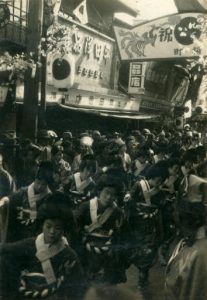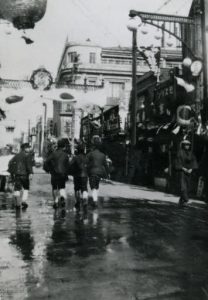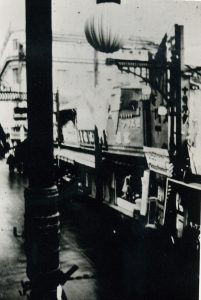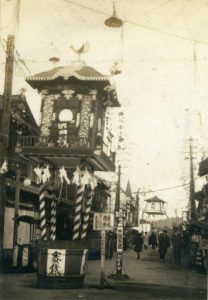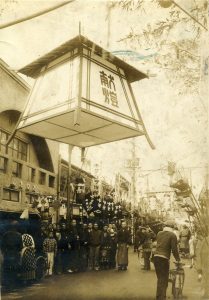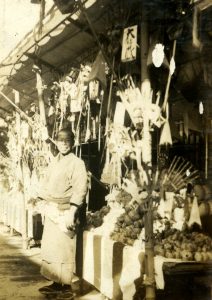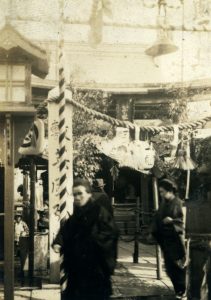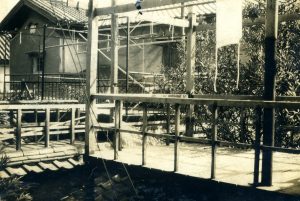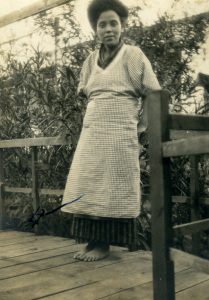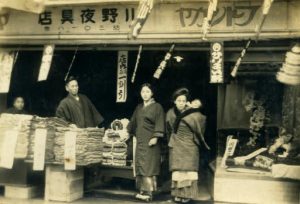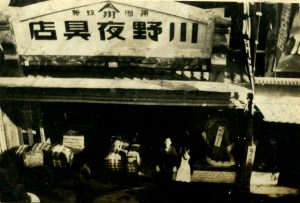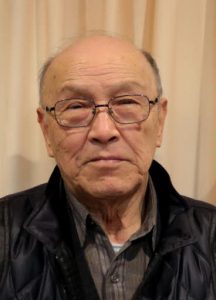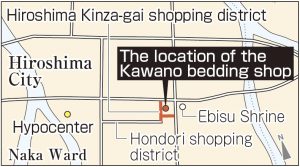Photos reveal life of Kinza-gai shopping district before Hiroshima A-bombing
May 20, 2019
by Miho Kuwajima, Staff Writer
This year marks the 90th anniversary of the opening of the Hiroshima Kinza-gai shopping district, located in the heart of Hiroshima. Tetsuo Kawano, 84, who was born and bred in this district in Naka Ward, has kept photos of the shopping district and the surrounding area that were taken by his father in the 1920s and 1930s. Because the photos vividly show the townscape of the city and the bustle of people’s lives prior to the atomic bombing of Hiroshima, they are thought by experts to be very valuable materials.
The shopping district was named “Kinza-gai” in 1929, in the hope that Kinza (which, literally, includes the meaning “gold”) would be more prosperous than Ginza (which includes the meaning “silver”) in Tokyo. Before World War II, the Kawanos were running a bedding shop on the first floor of their house. Because his father, Yasaburo, enjoyed taking photos, his home was equipped with a darkroom and his father took a lot of pictures of their family and the Kinza-gai area.
The Kinza-gai shopping district was lined with shops that sold such things as clothing, clocks, and boiled fish paste, and the joyful voices of children playing on roof platforms, used to dry clothes, could be heard everywhere. Some photos show the Ebisu Grand Festival, held in November; the Kawano bedding shop, full of pillows and futon (Japanese bedding) being sold at special prices; and a road near the shopping district where a tower was built and a “road closed” sign for cows, horses, and cars was installed by the Higashi (East) Police Station. Other photos depict the parade celebrating the birth of the crown prince (now the retired emperor) in February 1934.
However, during World War II, buildings located to the west of the Kinza-gai district were removed because houses had to be demolished in order to create fire lanes in the event of air raids. Then, on August 6, 1945, the shopping district, which was located within a 700-meter radius of the hypocenter, was completely destroyed. Mr. Kawano, who was 10 years old at the time and had been evacuated earlier to present-day Kitahiroshima-cho, lost both his parents. The remains of his father, then 49, were never located, while the charred body of his mother Matsuyo, then 45, was found lying on her back near the kitchen of their house.
Mr. Kawano’s family had kept their photo albums, camera film, and futon cloth at a relative’s house in the suburbs of the city to protect them from air raids. Masayuki, Mr. Kawano’s elder brother who was demobilized after the war and worked hard to help restore the Kinza-gai shopping district (he died in 1986 at the age of 65), carefully looked after the photos, which were later passed on to Mr. Kawano.
Toshikuni Nakawaga, 62, the former president of the Hiroshima Municipal Archives, said, “I have never seen pre-war photos of the Ebisu Grand Festival. They were taken at various locations within the shopping district, and are therefore extremely valuable.” Mr. Kawano said with conviction, “The residents of the Kinza-gai were all close friends and the shopping district was a very busy and lively place. There should never be wars which make human beings so unhappy.”
(Originally published on May 20, 2019)
This year marks the 90th anniversary of the opening of the Hiroshima Kinza-gai shopping district, located in the heart of Hiroshima. Tetsuo Kawano, 84, who was born and bred in this district in Naka Ward, has kept photos of the shopping district and the surrounding area that were taken by his father in the 1920s and 1930s. Because the photos vividly show the townscape of the city and the bustle of people’s lives prior to the atomic bombing of Hiroshima, they are thought by experts to be very valuable materials.
The shopping district was named “Kinza-gai” in 1929, in the hope that Kinza (which, literally, includes the meaning “gold”) would be more prosperous than Ginza (which includes the meaning “silver”) in Tokyo. Before World War II, the Kawanos were running a bedding shop on the first floor of their house. Because his father, Yasaburo, enjoyed taking photos, his home was equipped with a darkroom and his father took a lot of pictures of their family and the Kinza-gai area.
The Kinza-gai shopping district was lined with shops that sold such things as clothing, clocks, and boiled fish paste, and the joyful voices of children playing on roof platforms, used to dry clothes, could be heard everywhere. Some photos show the Ebisu Grand Festival, held in November; the Kawano bedding shop, full of pillows and futon (Japanese bedding) being sold at special prices; and a road near the shopping district where a tower was built and a “road closed” sign for cows, horses, and cars was installed by the Higashi (East) Police Station. Other photos depict the parade celebrating the birth of the crown prince (now the retired emperor) in February 1934.
However, during World War II, buildings located to the west of the Kinza-gai district were removed because houses had to be demolished in order to create fire lanes in the event of air raids. Then, on August 6, 1945, the shopping district, which was located within a 700-meter radius of the hypocenter, was completely destroyed. Mr. Kawano, who was 10 years old at the time and had been evacuated earlier to present-day Kitahiroshima-cho, lost both his parents. The remains of his father, then 49, were never located, while the charred body of his mother Matsuyo, then 45, was found lying on her back near the kitchen of their house.
Mr. Kawano’s family had kept their photo albums, camera film, and futon cloth at a relative’s house in the suburbs of the city to protect them from air raids. Masayuki, Mr. Kawano’s elder brother who was demobilized after the war and worked hard to help restore the Kinza-gai shopping district (he died in 1986 at the age of 65), carefully looked after the photos, which were later passed on to Mr. Kawano.
Toshikuni Nakawaga, 62, the former president of the Hiroshima Municipal Archives, said, “I have never seen pre-war photos of the Ebisu Grand Festival. They were taken at various locations within the shopping district, and are therefore extremely valuable.” Mr. Kawano said with conviction, “The residents of the Kinza-gai were all close friends and the shopping district was a very busy and lively place. There should never be wars which make human beings so unhappy.”
(Originally published on May 20, 2019)

